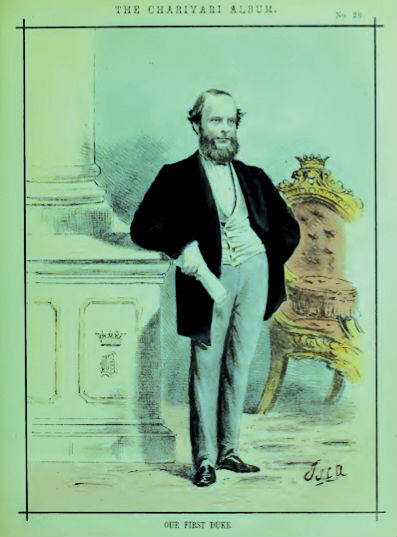Registered with the Registrar of Newspapers for India under R.N.I 53640/91
Vol. XXVII No. 12, October 1-15, 2017
CHARIVARI – 6
Sriram V
The Duke who gave us a canal

In all probability, it will remain Buckingham Canal forever. No politician of our present times will want his/her name to be associated with such a degraded waterbody. Yet, at least till the 1950s, this was a navigable canal, through which supplies came from Andhra to Madras and people travelled by boat to Mamallapuram and beyond.
Operated by a system of locks, it left behind numerous Lock Colonies within the city, and at least one lock still survives, behind the University buildings. Outside the city limits, the Canal is largely intact and is one of India’s longest, stretching from upper Andhra to deep down Tamil Nadu, a length of 800km. Prior to 1875, it existed in two parts, a northern canal, named after Basil Cochrane and later the second Lord Clive, and a southern canal. It was the Duke of Buckingham and Chandos who got the two connected through the city, and consequently lent his name in perpetuity to it.
His Grace The Right Honourable Richard Plantagenet Campbell Temple-Nugent-Brydges-Chandos-Grenville, the 3rd Duke of Buckingham and Chandos, was the first (and probably only) duke to accept a gubernatorial post in India. As he was a peer of the highest order in the British aristocracy, this was rather unusual. But he was no stranger to public life, having, as the Indian Charivari puts it, held many ministerial appointments, the last one prior to becoming Governor being Secretary of State for the Colonies. He had just assumed charge when the Charivari was published and so the book merely wishes him well on his embarking on his career in India. In the event, Madras was his only posting here.
Taking charge in 1875, the Duke had almost at once to play host to the Prince of Wales, later Edward VII. The harbour works were begun on that occasion. A year later, he was faced with the terrible Madras famine. The Imperial Government in Calcutta largely thwarted his attempts at relief. The Viceroy Lord Lytton refused to believe that a famine was in progress and even after visiting Madras contented himself with writing about how the natives in the relief camps were all fat and happy. Undaunted, the Duke of Buckingham appealed to the Mayor of London who in turn ensured considerable sums were collected and sent over for relief. A food-for-work programme was begun in 1876, which involved the digging of the canal through Madras. Completed in 1878, it was named after the Governor. It was also in the same year that the Buckingham Mill Co Ltd, promoted by Binny & Co, went into production. The entity was clearly named after the Duke as he was then the Governor. It was also during his tenure that the British graves in Madras were all documented. The long-forgotten burial spot of Lord Pigot was discovered and he was interred with due ceremony in the Church of St Mary’s in The Fort, the Duke funding the tombstone with its simple legend ‘In Memoriam’.
The Duke completed his tenure in 1880 and returned to England where he resumed his career in local politics, passing away in 1889.

